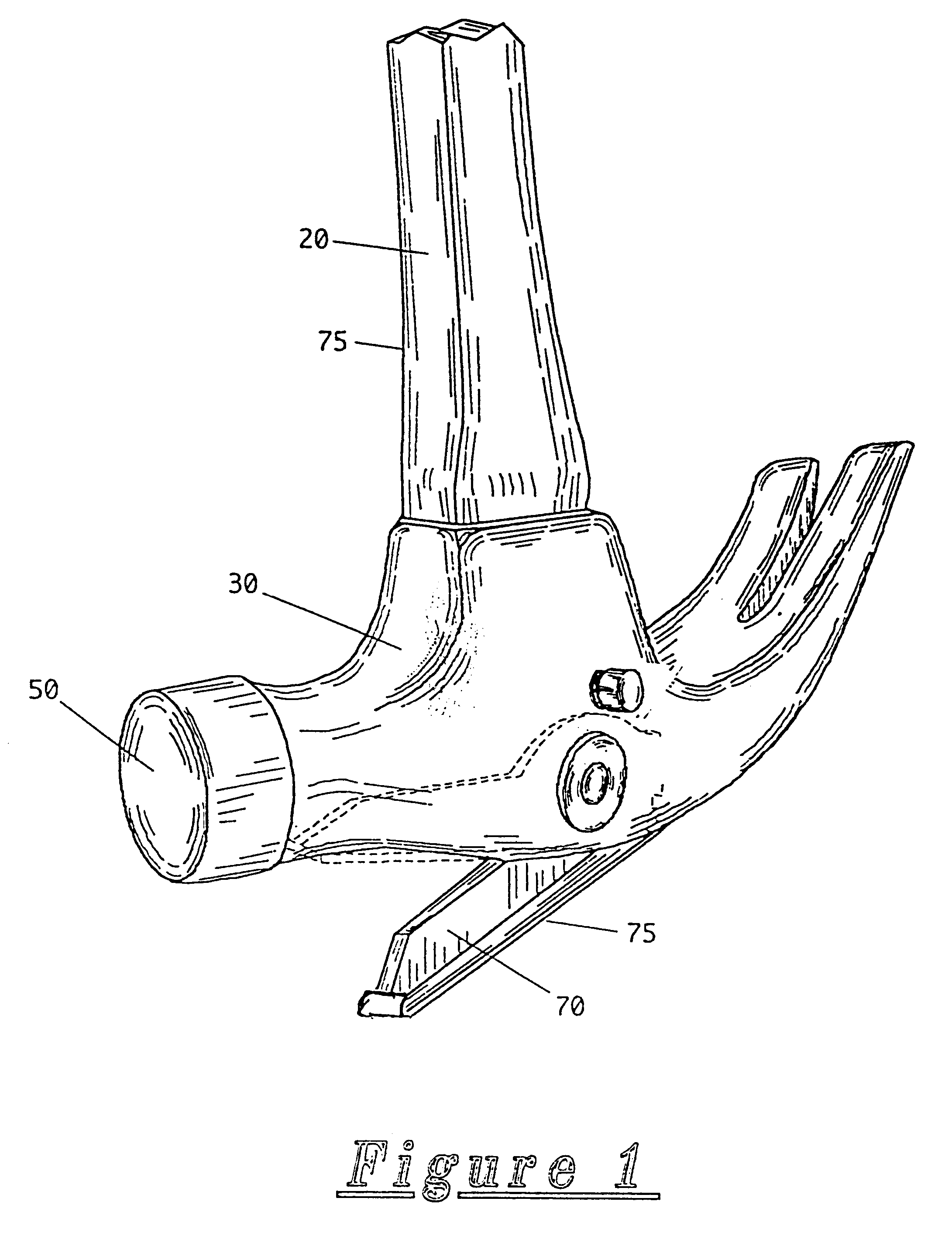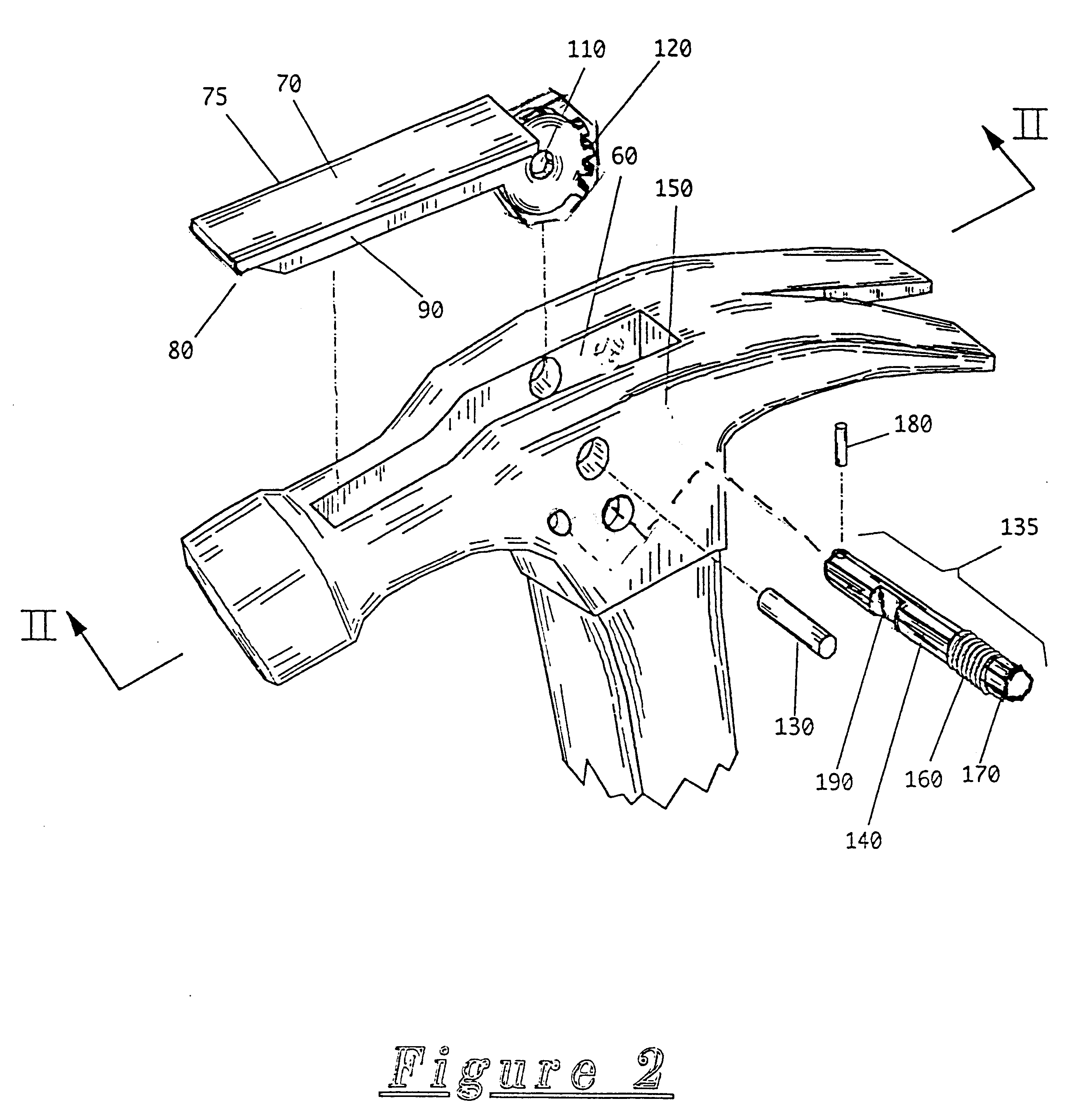Hammer with integral lever mechanism
a lever mechanism and hammer head technology, applied in the field of construction tools, can solve the problems of difficult to complete removal with a conventional hammer, time-consuming and tiring, and long nails
- Summary
- Abstract
- Description
- Claims
- Application Information
AI Technical Summary
Benefits of technology
Problems solved by technology
Method used
Image
Examples
Embodiment Construction
of the Figures
Referring now to FIG. 1, a hammer with integral lever mechanism 10 is shown, according to the present invention, disclosing a hammer of generally traditional configuration comprised of a handle 20 extending perpendicularly downward from a head 30. The handle 20 is an elongated, linear, cylindrical shaft which terminated into the head 30. The head 30 is overall of a traditional claw hammer configuration, with a set of claws 40 on one end and a cylindrical, flat striking surface 50 on the other. It is envisioned that other styles of standard specialty, or novel configuration can be easily incorporated into the teachings of the present invention, and only one particular configuration shall be shown and described for purposes of clarity of disclosure and not by way of limitation of scope. The head 30, claws, 40, and the striking surface 50 are made from a strong material, such as hardened steel.
Referring now to FIG. 2, the top of the head 30, opposite the handle 20, has a ...
PUM
 Login to View More
Login to View More Abstract
Description
Claims
Application Information
 Login to View More
Login to View More - R&D
- Intellectual Property
- Life Sciences
- Materials
- Tech Scout
- Unparalleled Data Quality
- Higher Quality Content
- 60% Fewer Hallucinations
Browse by: Latest US Patents, China's latest patents, Technical Efficacy Thesaurus, Application Domain, Technology Topic, Popular Technical Reports.
© 2025 PatSnap. All rights reserved.Legal|Privacy policy|Modern Slavery Act Transparency Statement|Sitemap|About US| Contact US: help@patsnap.com



